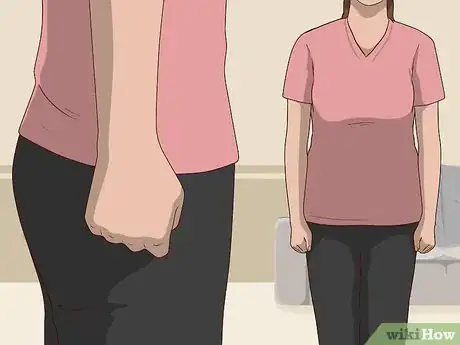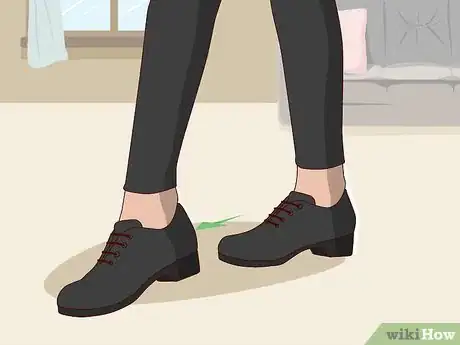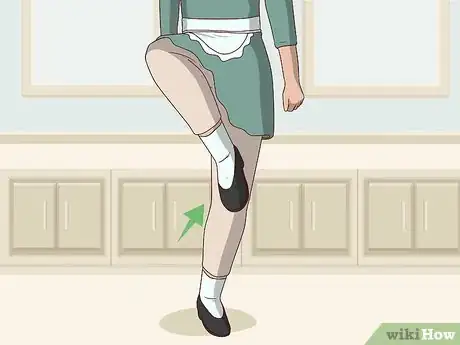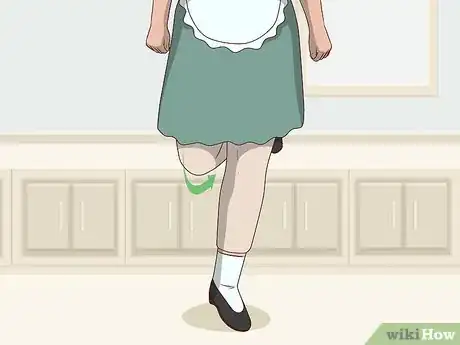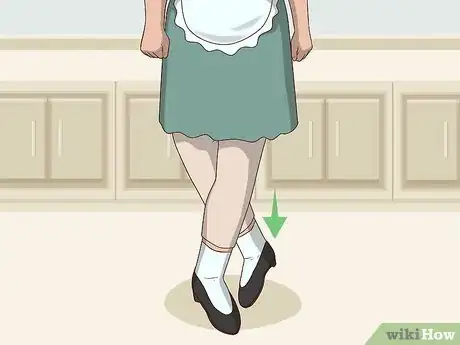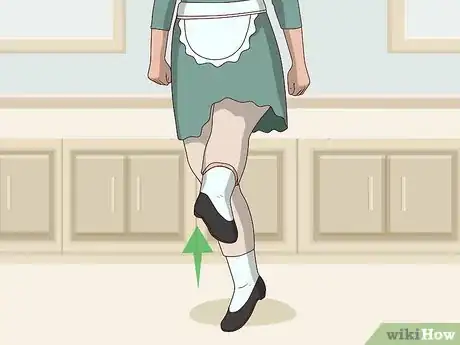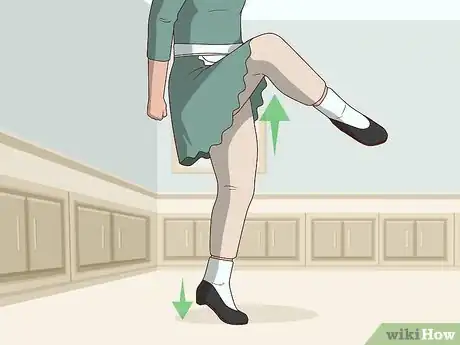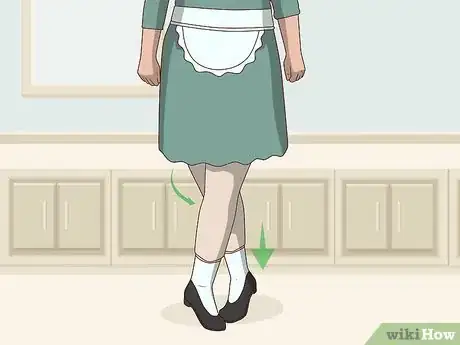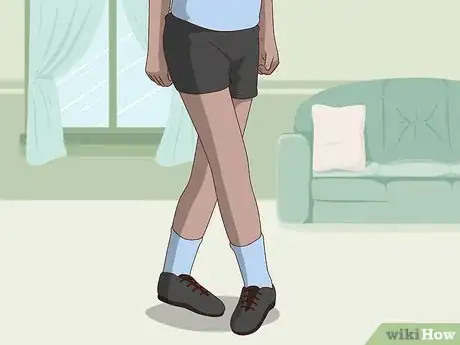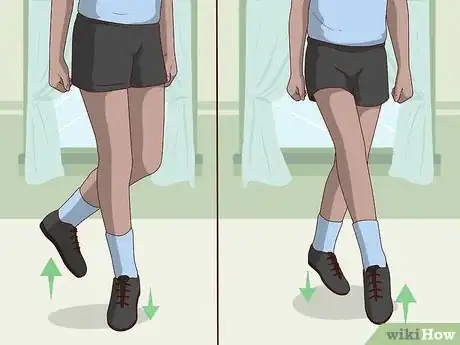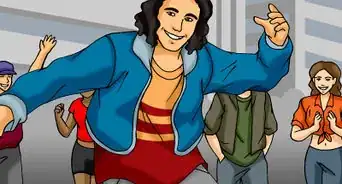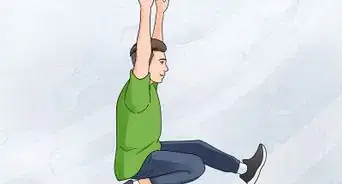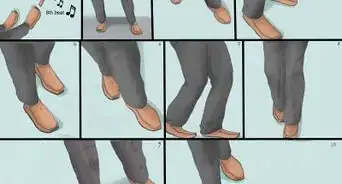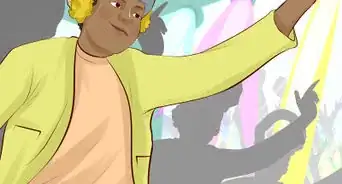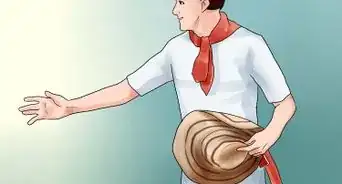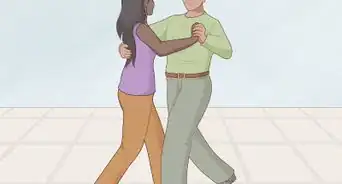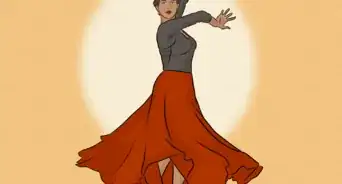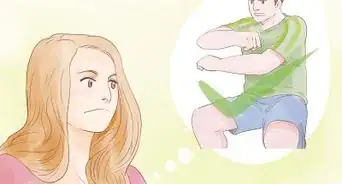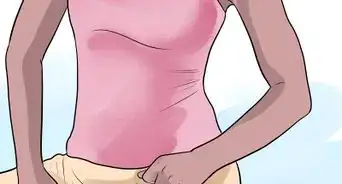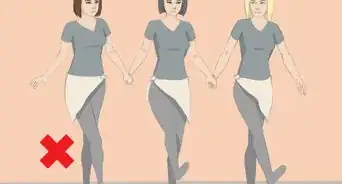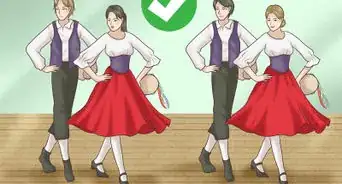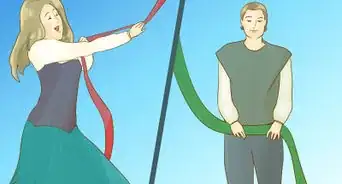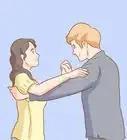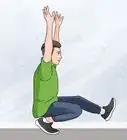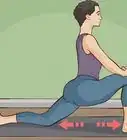This article was co-authored by wikiHow Staff. Our trained team of editors and researchers validate articles for accuracy and comprehensiveness. wikiHow's Content Management Team carefully monitors the work from our editorial staff to ensure that each article is backed by trusted research and meets our high quality standards.
There are 13 references cited in this article, which can be found at the bottom of the page.
This article has been viewed 205,083 times.
Learn more...
If you want to dance an Irish Jig, you have to first master the stance and posture. Then, you’ll be able to do different variations of the dance, including the light jig and the reel. Though they may seem similar on the outside, the footwork and movements can be quite different. Once you have the basic moves down, you'll be ready to hop, point, and skip with the best of 'em.
Steps
Mastering the Starting Stance
-
1Stand with your shoulders back and down. Before you even start your Irish dance, make sure you are standing up straight. Your shoulders should be back so that your chest is out and you appear confident. No Irish dancer is ever caught slouching. However, don’t stand stiff with your shoulders up, make sure they are down so that you are comfortable.[1]
- Make sure your head is held high and proud during the entire dance.
-
2Keep your arms straight and at your sides. The positioning of the arms is a major element of the Irish dance. Some dancers keep their arms directly at their sides. Others put their arms slightly behind their backs so their hands are hidden. Put your hands into fists, but be careful not to clench them -- you don't want to tense up.[2]
- While you’re dancing, your entire upper body, including your arms, will stay very still while your feet move quickly.
Advertisement -
3Cross your legs and point your right toe out in front of you. This will always be your starting position and the position you return to throughout the dance. Your right leg should be slightly out in front of your left leg with your toes turned outward. It is similar to ballet's closed 4th position.[3]
- Keep your knees crossed at all times. Throughout the dance, the leg in front switches constantly, but you need to remember to keep your knees close together and crossed the entire time.
- If your feet are turned out properly, you should be able to see a diamond-shaped space between your legs and your ankles.
Performing the Light Jig
-
1Assume the starting stance. Before you start your jig, you’ll need to put your feet in the starting position. Start by standing up straight with your shoulders back. Then cross your legs with your right leg in front of your left. Point your toes out and keep your arms straight at your side.[4]
-
2Hop up and bring your right leg up to your left knee. Hop slightly on your left leg and bend your right leg so it touches your left knee.[5]
- Keep your toes up the entire time, with both feet turned outward.
-
3Put your right leg down and bend it back behind your left leg. Immediately after your hop in the previous step, bring your right leg behind you and bend your knee so your right foot almost touches your butt. During this step, hop up slightly on your left leg.[6]
-
4Put your right foot to the floor and skip to the side. As your right leg comes down from the previous step, hop skip to the side, keeping your toes pointed. Straighten your knee while you’re doing these skips so your foot is extended out in front of your body.[7]
-
5Lift your left leg up and pivot your body to the right. Continue to hop and lift your left leg up to your butt. You should be circling counterclockwise, about halfway around in a circle by this juncture. As you move around, make sure your toes are always pointed and your heel off the ground.[8]
- Remember to keep your arms down at your sides the entire time.
-
6Hop three times while keeping your knees high. First hop in place with your right leg, lifting your knee up high. Then, hop backward by bringing your right leg back behind your left leg. Hop backward once more, but this time with your left leg.[9]
-
7Finish the circle leading with your left leg. At this time your body should be facing the right. Repeat the same steps, but this time starting with your left foot pointed out in front of you. Return to the position on the floor at which you started.
- Stay on your toes for the entirety of the dance.
Executing the Reel
-
1Assume the starting position. For all Irish dances, your right toe should be pointed in front of you. Your shoulders should stay low and back while your arms are straight down by your side.[10]
-
2Keep your right foot pointed and bring it back. Bring your right knee up slightly, then put your leg behind your body. When you place your foot on the floor, you should be in the same position that you started with, except your left leg is in the front of your body.[11]
-
3Point your left foot and bring it to the back. Repeat the previous step, except this time; bring your left leg behind your body so your right leg is in front again. Make sure you keep your toes pointed out.[12]
-
4Lift your knee and walk in place for a count of 7. While walking, stay on your toes and alternate lifting your knees on each count. On 7, place your left foot solid on the ground.[13]
- When you lift your knees, keep your toes pointed.
-
5Repeat back steps with alternate feet. After your count of 7, point your right foot out, lift your knee, and bring your leg behind your body. Then, repeat this step with your left leg, pointing your foot and then bringing the leg behind your body.[14]
- Once you get the basics down, make it "hoppy." There should be a livelihood to your points and knee lifts that make it seem like you're sort of jumping. With every accented step, add a small hop on your back foot.
Community Q&A
-
QuestionDo you have to memorize it?
 LolollipopCommunity AnswerYes, typically Irish dancers memorize their steps to perform. If you're just doing it for fun, you can always look back if you forget a part.
LolollipopCommunity AnswerYes, typically Irish dancers memorize their steps to perform. If you're just doing it for fun, you can always look back if you forget a part.
References
- ↑ https://youtu.be/Nm7ZaMDcmk8?t=11
- ↑
- ↑ https://www.youtube.com/watch?v=Nm7ZaMDcmk8
- ↑ https://youtu.be/u1dN7zhznkI?t=16
- ↑ https://youtu.be/1oNjx1w_AvI?t=37
- ↑ https://youtu.be/1oNjx1w_AvI?t=39
- ↑ https://youtu.be/1oNjx1w_AvI?t=41
- ↑ https://youtu.be/1oNjx1w_AvI?t=42
- ↑ https://youtu.be/1oNjx1w_AvI?t=101

